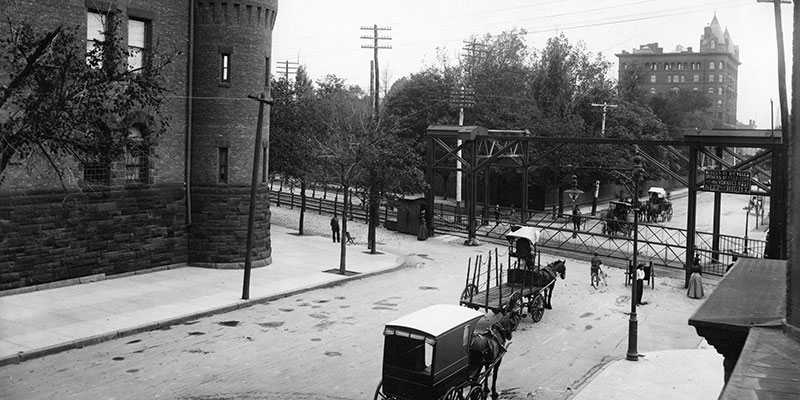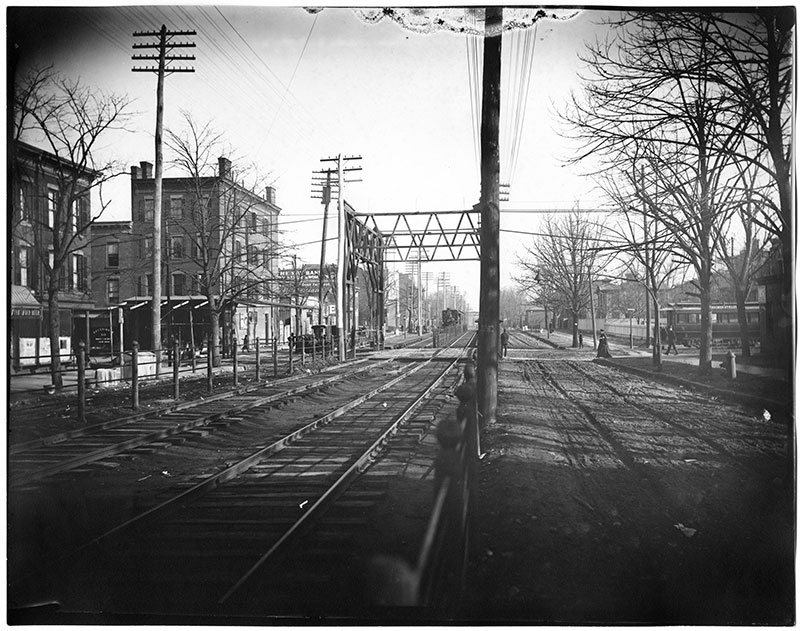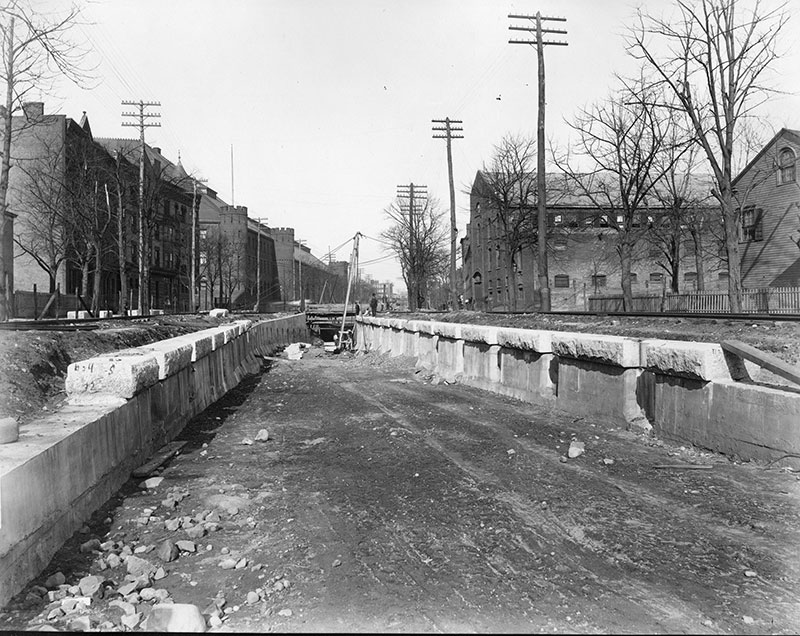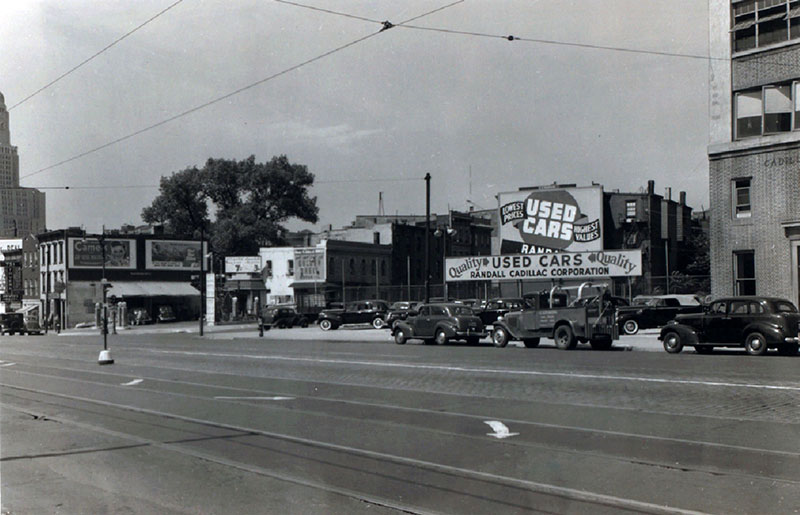
 Department of City Planning311
Department of City Planning311 Search all NYC.gov websites
Search all NYC.gov websites
Atlantic Avenue Mixed-Use Plan

Rail-based Development


At the end of the 19th century, a railway along Atlantic Avenue connected the farms of Long Island to Brooklyn's industrial waterfront. Thanks to the railway, many industrial businesses flourished along Atlantic Avenue and surrounding blocks.
Car-centric Development

In the early 1900s, the railway moved underground. At the same time, Long Island became more suburban as car ownership rose. As a result, car-focused businesses including gas stations, vehicle repair shops, warehouses, and distribution centers, flourished along Atlantic Avenue.
1961 zoning
When New York City was last rezoned in 1961, Atlantic Avenue was designated “M1-1,” an industrial district that only allows low-rise commercial and industrial buildings with high parking mandates — a model that is now outdated and hurts modern businesses. The zoning also does not allow new housing to be built, even though it is surrounded by existing residential neighborhoods and has excellent access to jobs in Downtown Brooklyn and Lower Manhattan.
Atlantic Avenue and surrounding areas today
This part of Atlantic Avenue has seen little new development in recent decades. Today, a mix of vacant lots, self-storage, and auto shops characterize the area.
Meanwhile, downzonings in largely residential neighborhoods surrounding Atlantic Avenue (Bedford-Stuyvesant, Clinton Hill, Crown Heights, and Prospect Heights) alongside tremendous population growth has only intensified the need for new housing and especially affordable housing.
Recent planning efforts
After the 2013 rezoning of a portion of Crown Heights, neighboring Brooklyn Community Board 8 formed a committee to establish a shared vision for housing and job growth in their district, along Atlantic Avenue.
Community Board 8 has led planning efforts within the area, which is commonly referred to as M-CROWN (Manufacturing, Commercial, and Residential Opportunities for a Working Neighborhood).
Since 2016, NYC Planning has worked closely with the Board, elected officials, and community members, including neighboring Community Board 3, to develop a shared vision for growth that supports local goals of creating job centers, affordable housing, and public realm improvements.
In 2018, NYC Planning presented background on the study (read it here) with a draft land use framework and how it could support the community’s vision.
In April 2022 — in response to a request from elected officials, Community Board leaders, nonprofit organizations, and other community members — NYC Planning committed to advance a proposal for a neighborhood rezoning and needed investments for infrastructure and public services.
NYC Planning will continue to closely collaborate with community members and City partners as we build a plan together. This process will culminate in a formal public review, anticipated for 2024. Learn more about the public review process here.







